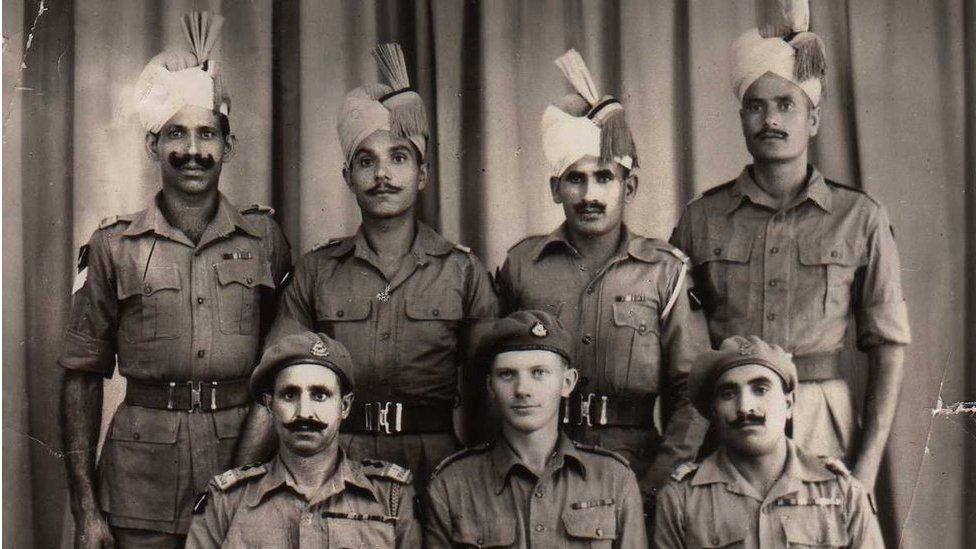A real tennis court battle which changed history
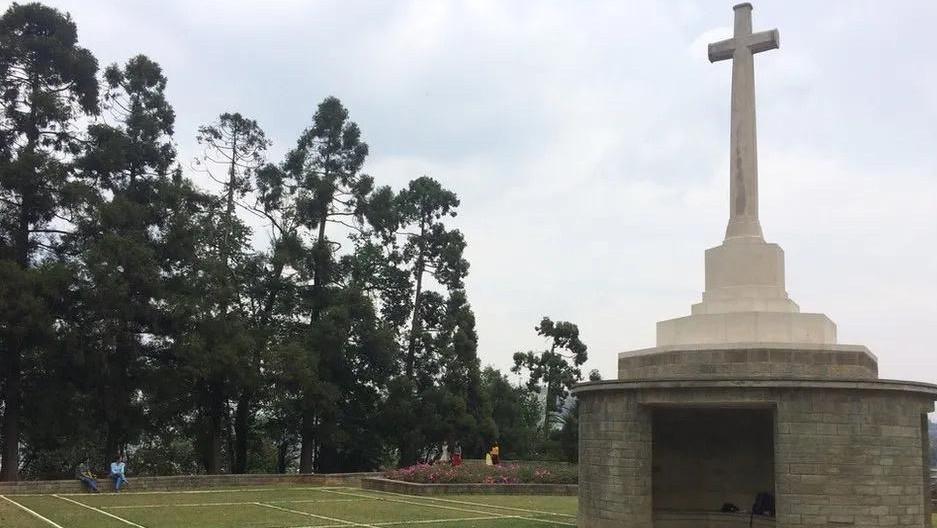
Kohima: At one point only the tennis court separated Allied and Japanese troops
- Published
The world's greatest tennis players have battled for glory at Wimbledon over the past fortnight. Two men from East Anglia have fought and shone in south-west London.
Henry Patten, from Manningtree in Essex, has starred in the doubles and Alfie Hewett, who lives in Cantley, Norfolk, in the wheelchair tournament.
Eighty summers ago British soldiers fought in a real battle across a tennis court - against the Japanese.
The Battle of the Tennis Court, external was fought 8,000 miles from Wimbledon - at Kohima on an eastern edge of India - when World War Two was in its fifth year.
It was a feature of wider battles, the battles of Kohima and Imphal, external, fought between March and July 1944.
Men from Norfolk and Essex regiments were involved - one won a posthumous Victoria Cross.
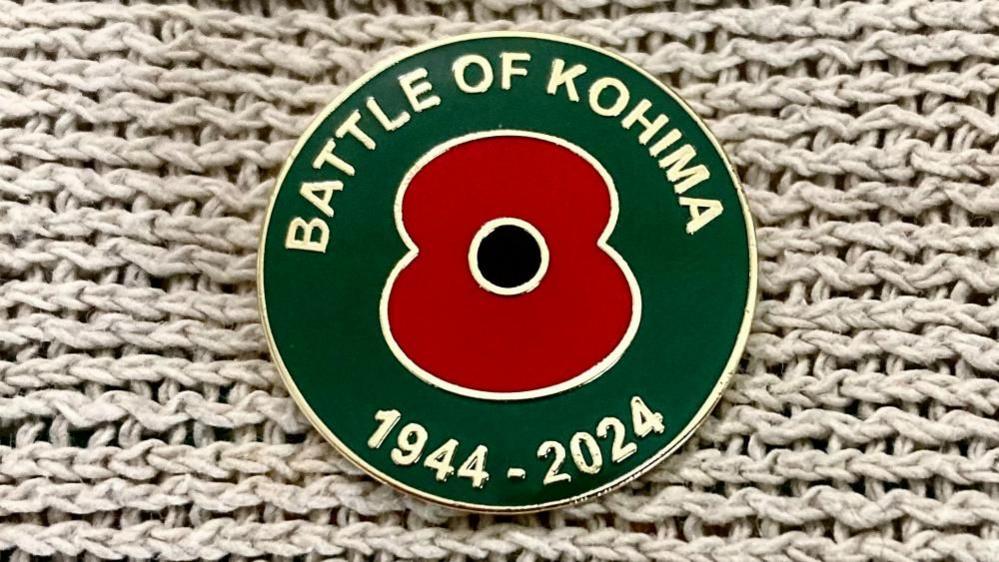
The 1944 Battle of Kohima has been remembered at 80th anniversary events
British and Indian forces fought to stop a Japanese advance into India and their efforts changed the course of the war.
Casualty figures show that British and Indian forces lost around 4,000 men - dead, missing and wounded - during the fighting in the spring and summer of 1944.
The Japanese around 7,000.
Military historians have suggested that the conflict may be Britain's "greatest battle"., external
'Turning Point'
"The battles of Imphal and Kohima were a crucial turning point in the attempted Japanese invasion of India during the Second World War," says a post on the National Army Museum, external website.
"By October 1942, Singapore, Hong Kong, Malaya and Burma had all fallen to the Japanese. Their army looked unbeatable.
"Yet, with morale at its lowest, General William Slim, external set about reforming and rebuilding the British-Indian Fourteenth Army.
"His force then succeeded in halting the Japanese on India's eastern frontier in two epic battles fought between March and July 1944.
"This hard-won victory proved the turning point in the Burma campaign and paved the way for the reconquest of that country."
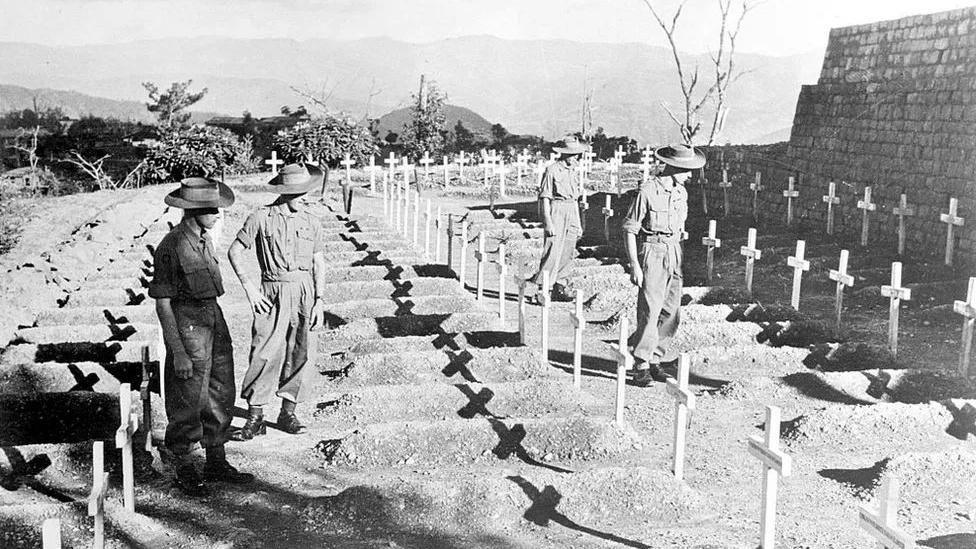
1945: Men of the Royal West Kent Regiment pay tribute to comrades who fell in the Battle of Kohima
Japanese soldiers had marched to Kohima through what was then Burma - aiming to invade India.
They had already routed the British in Burma, but no-one expected them to successfully negotiate mosquito-infested jungle hills and reach Kohima and Imphal.
When they did, British and Indian troops defending the two towns were surrounded.
Allied troops battled to prevent the Japanese moving through and capturing the strategic city of Dimapur.
Fighting was brutal and Allied soldiers became confined to Garrison Hill, which overlooked Kohima.
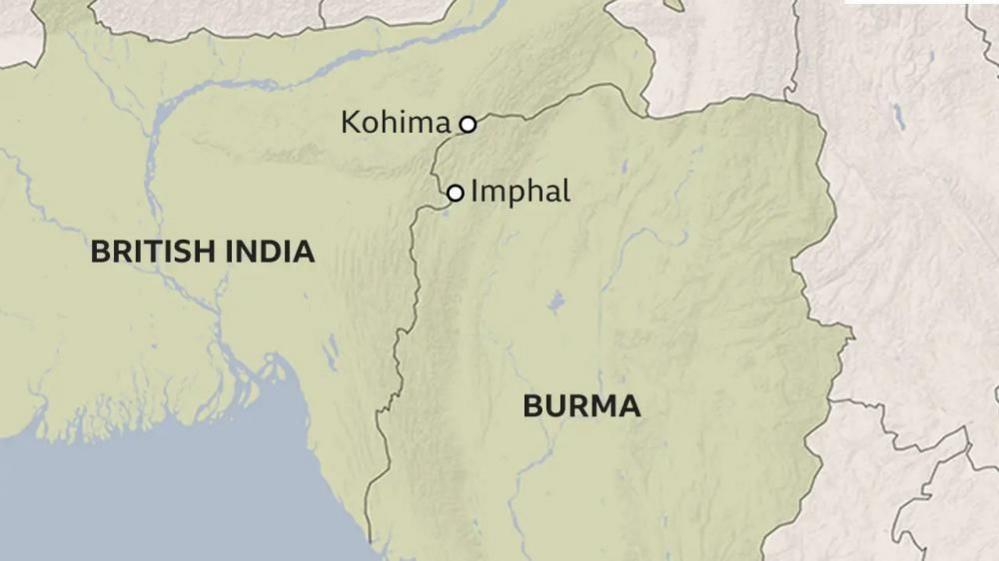
Japanese troops marched through Burma and aimed to invade Inidia
"The Japanese offensive started well," explains a further National Army Museum analysis, external.
"They quickly isolated the hilltop town of Kohima, capturing all but the central ridge by mid-April.
"At one point the fighting descended into hand-to-hand combat, with only a tennis court separating the two sides dug in on the hill."
The besieged Allies held on until reinforcements arrived.
In June, the Japanese retreated.
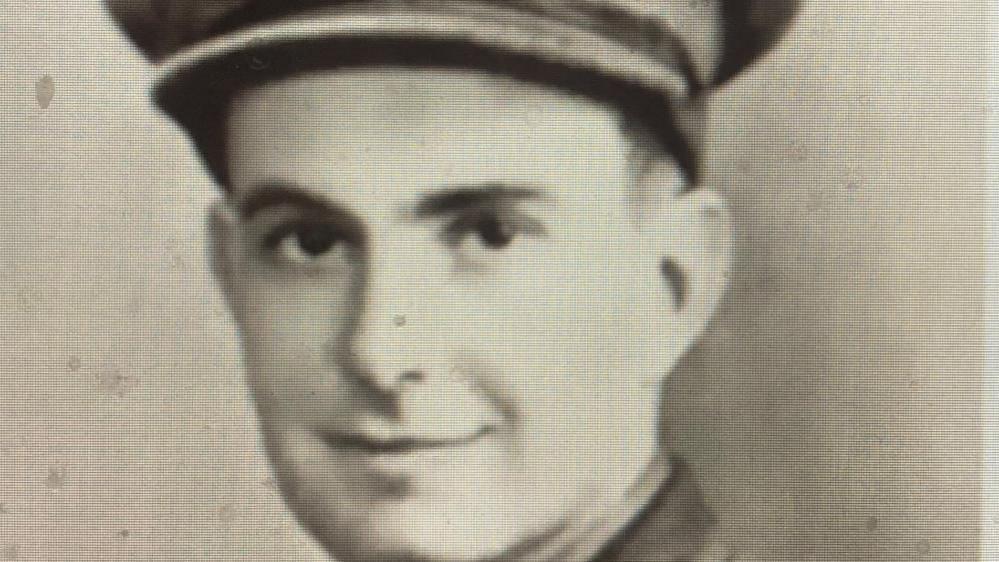
Captain John Randle VC of the 2nd Norfolk Regiment, who died during the Battle of Kohima
Troops from regiments across Britain were involved.
The 2nd Royal Norfolk Regiment was part of the 4th Infantry Brigade - the 1st Essex Regiment part of the 3rd Indian Division (the "Chindits").
Capt John Randle died in early May, when fighting with the 2nd Royal Norfolk Regiment at Kohima.
'Flung'
"During the battle John performed several deeds of incredible bravery," explains a post on the Commonwealth War Graves Commission, external website.
"He had been badly wounded in the knee by a grenade but refused to be relieved.
"Despite the pain, he went into no-man’s land on 4 May and brought back several wounded comrades.
"Two days later his company was ordered to take a Japanese position on a ridge which was heavily fortified and where several attacks had already failed.
"John was hit several times during the advance but, undeterred, he charged a Japanese bunker.
"He threw in a grenade and then flung himself across the entrance to seal it."
Capt Randle was awarded a posthumous Victoria Cross.
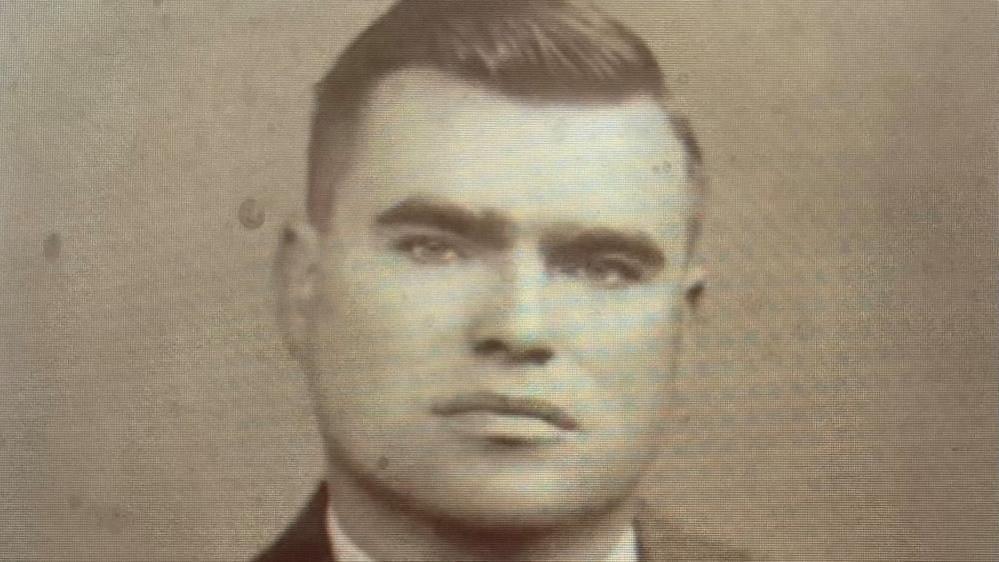
Lance-Corp John Harman VC, who died during the Battle of Kohima
Troops who fought at Kohima have been remembered at 80th anniversary events this year.
The Kohima Educational Trust, external featured Capt Randle in a webinar called Valour at Kohima, external.
Historians Robert Lyman, external and Stephen Snelling, external, a journalist from Norwich, told the stories of Capt Randle - and Lance-Corp John Harman, external, who who served with the 4th Battalion of the Queen’s Own West Kent Regiment, and also won the Victoria Cross.
Follow Norfolk news on Facebook, external, Instagram, external and X, external. Got a story? Email eastofenglandnews@bbc.co.uk, external or WhatsApp us on 0800 169 1830
- Published14 February 2021
